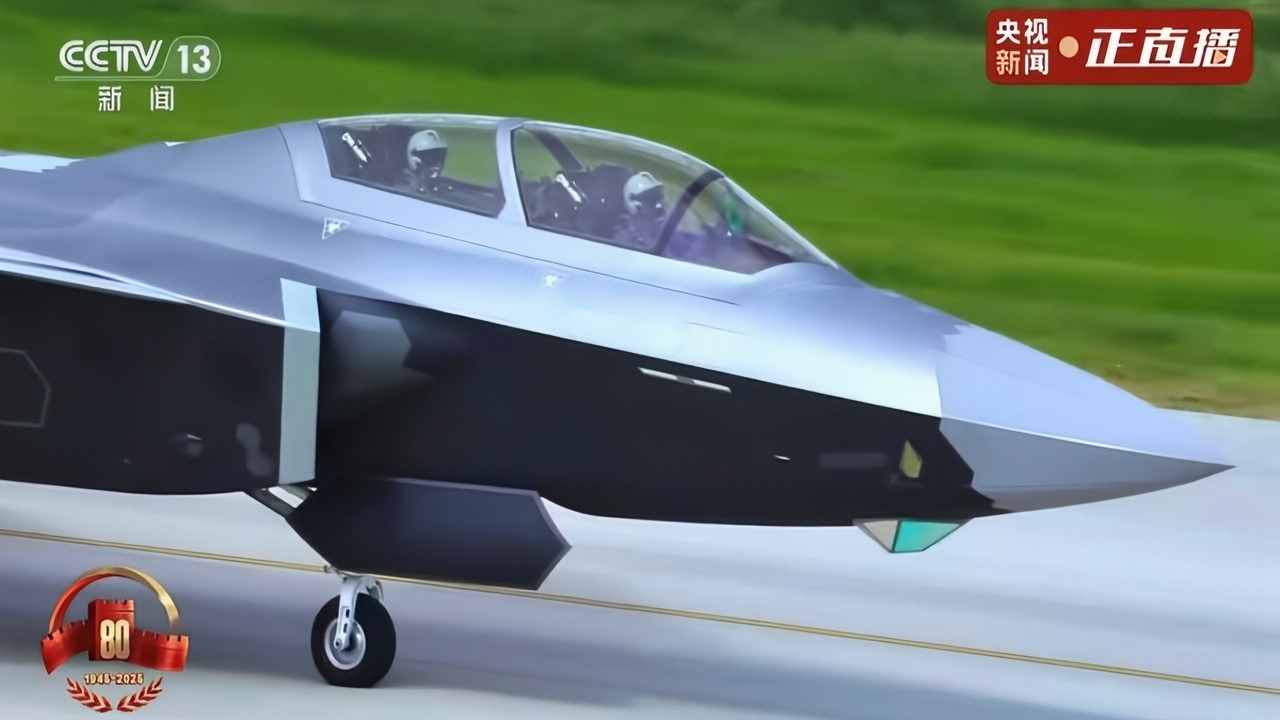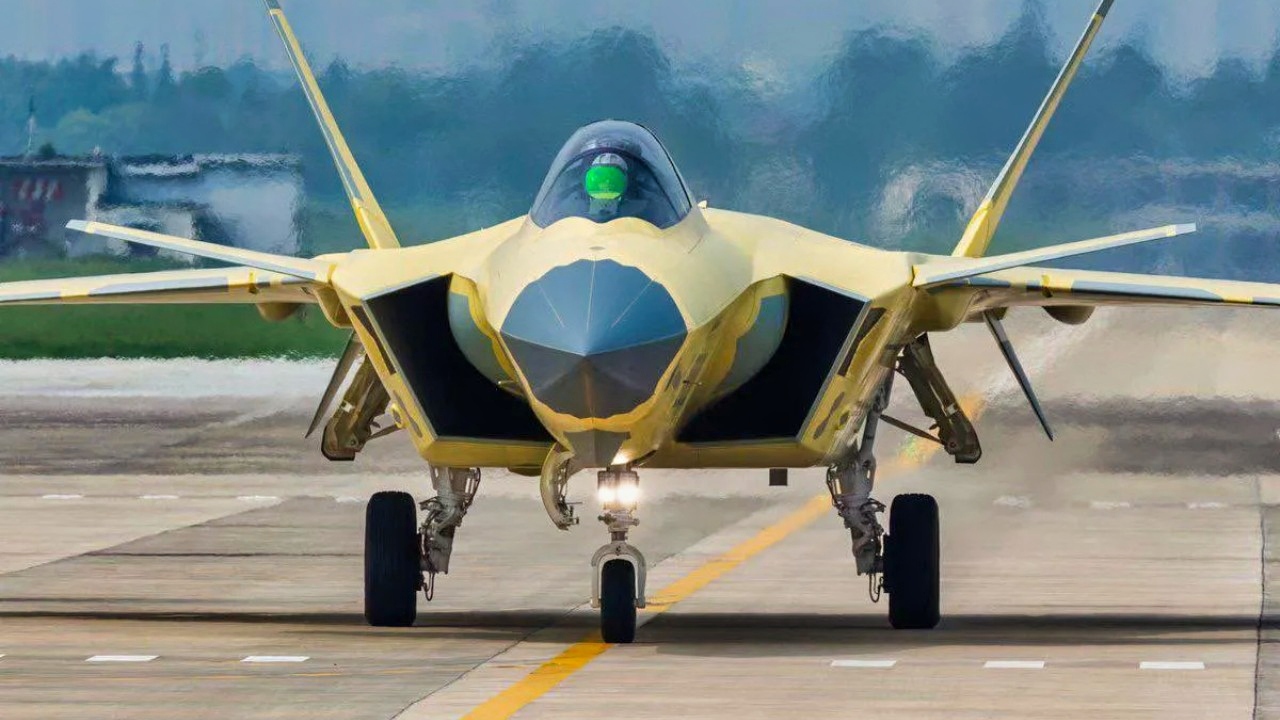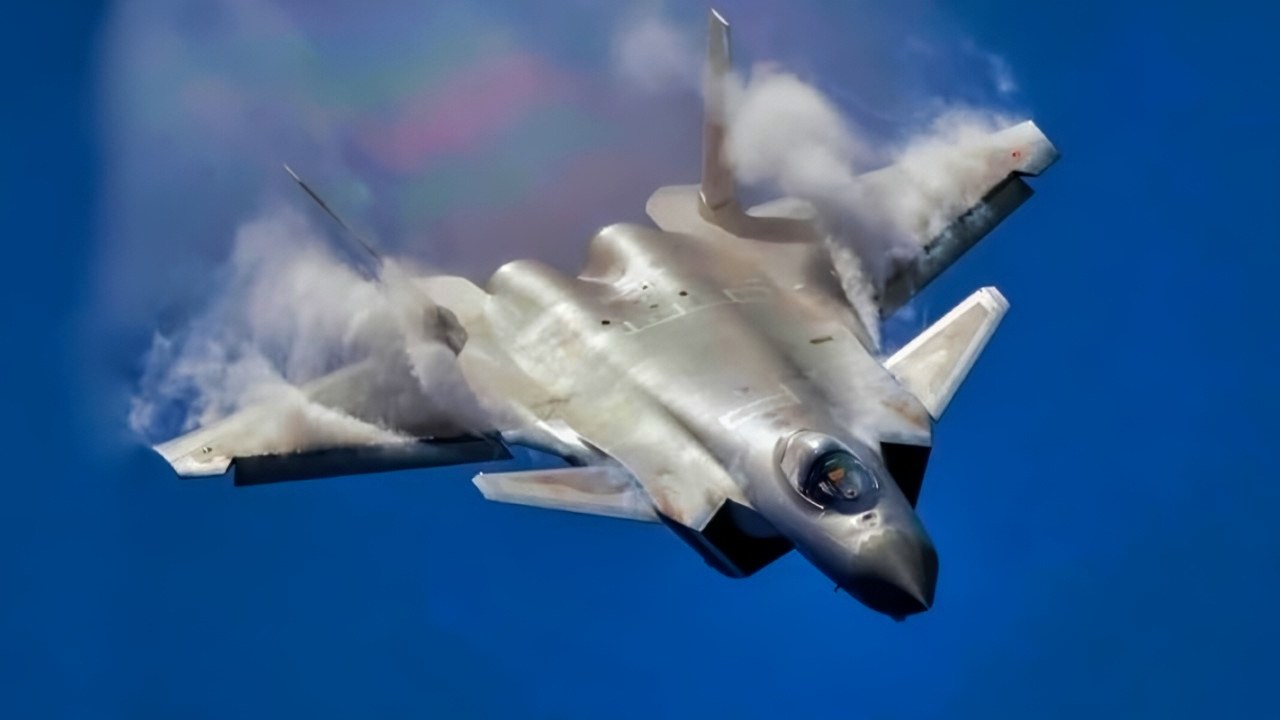Key Points and Summary – China’s J-20 “Mighty Dragon” stealth fighter program has been plagued by a long and difficult struggle to develop a capable domestic engine.
-Early J-20s were forced to rely on underpowered Russian AL-31F “stopgap” engines.

J-20 Fighter from Chinese PLAAF. Image Credit: Creative Commons.

J-20 Fighter CCTV Screen Pull. Imave Credit: Creative Commons.
-China then transitioned to its indigenous WS-10C, which offered improvements but still lacked the performance for true supercruise.
-The ‘Secret Weapon’: The ultimate powerplant, the WS-15, designed to provide 40,000 pounds of thrust and supercruise, has faced years of developmental delays. However, recent sightings of the WS-15 on J-20A and J-20S variants in 2023 suggest China may finally be overcoming these hurdles and unlocking the fighter’s full potential.
China’s J-20 Stealth Fighter: The Engine Challenge
China’s aerospace industry has evolved significantly in the last 20 years. Where it was once known for copying old Soviet designs, now China is a leading figure in aeronautical engineering, being the second country in the world to field two fifth-generation stealth fighters.
However, one of the biggest roadblocks in the march to modernization has been domestic engine production.
Originally reliant on Soviet-made engines, China has struggled in domestic engine production. This is best exemplified by the J-20 Mighty Dragon, which has undergone multiple revisions to its powerplant and is known to have achieved only its intended performance.
The Role of Soviet/Russian Engines
The J-20 first flew in January 2011 and entered operational service in 2017. It is a single-seat, twin-engine, all-weather multirole fighter that incorporates stealth shaping, internal weapons bays, advanced avionics, and a canard-delta wing configuration.
Its design philosophy prioritizes long-range capabilities and radar evasion over extreme agility, suggesting that it was built with the vast distances of the Western Pacific in mind.
The aircraft’s large airframe provides significant internal fuel storage, enabling extended missions without the need for external tanks that would compromise stealth.
In its early development stages, the J-20 relied on Russian AL-31F engines. These engines were designed initially for the Sukhoi Su-27 and its derivatives. The AL-31F is a reliable and proven turbofan engine, but it was not optimized for stealth or supercruise, which are key features of fifth-generation fighters.

J-20 Fighter. Image Credit: Creative Commons.

J-20 Fighter. Image Credit: Chinese Weibo.
The thrust output of the AL-31F is around 27,500 pounds with afterburner, which was sufficient for initial flight testing but not ideal for the aircraft’s intended performance envelope. The use of these engines was more of a stopgap measure while China worked on developing its own high-performance alternatives.
The Road to Home-Grown Engines
As the J-20 program matured, China began integrating its indigenous WS-10 series engines into the aircraft.
The WS-10, developed by the Shenyang Liming Aircraft Engine Company, is a family of turbofan engines used in several Chinese fighters, including the J-10, J-11, and J-16. The WS-10B and WS-10C variants were adapted for use in the J-20, offering improved thrust and reliability compared to earlier versions.
The WS-10C, in particular, became the standard engine for mass-produced J-20s starting around 2021. It delivers approximately 30,000 pounds of thrust with afterburner and includes design features aimed at reducing radar and infrared signatures, such as serrated nozzle edges.
While the WS-10 series was a significant improvement, the engines still fell short of the performance benchmarks China hoped to achieve.
For example, the WS-10B featured thrust vectoring but lacked true supercruise capability. The WS-10C, on the other hand, provided supercruise capabilities but lacked any sort of thrust vectoring. This limitation affects the J-20’s ability to maintain high speeds over long distances while preserving fuel and minimizing infrared emissions.

China’s J-20 Stealth Fighter. Image Credit: Chinese Weibo/Screenshot.
The WS-15
All of these other engines were stopgaps while waiting for the powerplant that the J-20 was supposed to have from the very beginning: the WS-15.
The WS-15 engines are among the most advanced domestically produced engines China has built to date.
It is designed to produce around 40,000 pounds of thrust with afterburner, enabling the J-20 to achieve supercruise and significantly enhancing its overall performance.
The engine incorporates advanced materials such as single-crystal turbine blades and high-temperature alloys, which are essential for operating at the extreme temperatures and pressures required for high thrust output.
The WS-15 also includes stealth-oriented design features, such as low-observable nozzle shaping and reduced infrared signature.
These enhancements are critical for maintaining the J-20’s low radar cross-section and survivability in contested airspace.
As of 2025, the WS-15 is still undergoing testing, but it has reportedly been fitted to some J-20 prototypes. Once fully operational, it will mark a significant milestone in China’s ability to field a truly indigenous fifth-generation fighter with competitive propulsion capabilities.
China’s Struggle for Fifth-Generation Engines
The development of the WS-15 has been anything but smooth. Developing a fifth-generation engine requires mastery of several complex technologies, including high-temperature metallurgy, precision manufacturing, and advanced control systems.
China has faced difficulties meeting the required reliability and performance standards, leading to delays in the full deployment of the WS-15. Nevertheless, the steady progress in the WS-10 series and the ongoing refinement of the WS-15 suggest that China is closing the gap with Western engine manufacturers.
The WS-15 was first integrated onto a J-20A fighter back in 2023. Other J-20As were spotted.

J-20S Fighter Chinese Internet Image.
The J-20S, a multi-seat variant of the aircraft, reportedly also features the new and improved engines, although the exact number of these variants is unknown as of now.
This indicates that China may have finally overcome many of the roadblocks that prevented it from mass-producing the engines.
The Age of the Mighty Dragon
With each iteration, China has been incrementally improving the J-20’s capabilities. With the AL-31F, the aircraft was limited in terms of stealth and speed.
The WS-10 series improved these aspects but left much to be desired in supercruise and top-tier maneuverability. The WS-15, once fully integrated, is expected to unlock the J-20’s full design potential, enabling it to perform high-speed intercepts, evade detection more effectively, and execute complex aerial maneuvers with greater agility.
The shift to domestic engines has significant implications. It reduces China’s dependence on foreign suppliers, particularly Russia, and allows for greater control over production rates and maintenance cycles.
It also demonstrates China’s arrival as a global leader in aerospace technology, capable of producing engines that rival those of the United States and its allies.
Furthermore, it significantly boosts China’s capabilities in a hypothetical conflict against the U.S. With its newest engines, the J-20 can challenge American air superiority, which has been uncontested for decades.
About the Author: Isaac Seitz
Isaac Seitz, a Defense Columnist, graduated from Patrick Henry College’s Strategic Intelligence and National Security program. He has also studied Russian at Middlebury Language Schools and has worked as an intelligence Analyst in the private sector.
More Military
China’s New J-35 Navy Stealth Fighter Summed Up in 2 Words
China’s ‘Mighty Dragon’ J-20 Air Force Stealth Fighter Summed Up in 2 Words
China Is Trying to Turn the Indo-Pacific Into a Giant U.S. Navy ‘No-Go Zone’
$13 Billion Mistake? USS Gerald R. Ford Is the Navy’s Aircraft Carrier Agony
China’s ‘Thousands of Missiles’ Have a Message for U.S. Navy Aircraft Carriers










